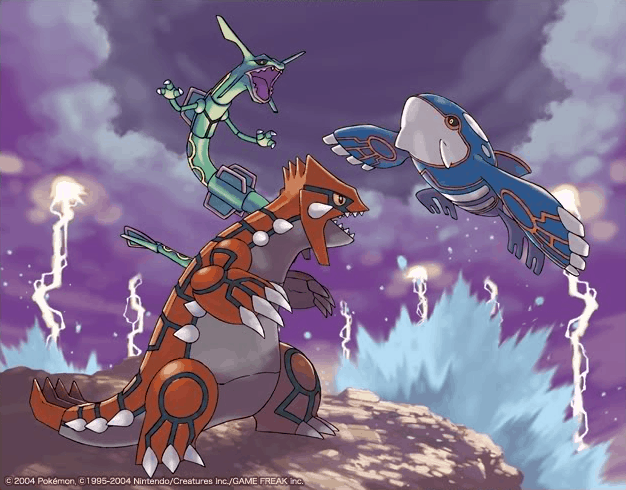
It didn’t help that Ruby and Sapphire seemed to go out of its way to alienate the existing fanbase. Part of the idea of Gen III was that it was a new beginning for the series. There are a few reasons for this, but regardless, it also left Gen III perceived for years as the least popular generation.
My biggest problem with it is that Nintendo’s experimenting with the formula lead to by far the most over-inflated generation. It had the usual main two version release, the third version, remakes of the Gen I games and two GameCube RPGs. After the last two generations had only three releases, this makes Gen III the biggest and most complex to date, especially if the player is trying to complete the Pokedex.
Furthermore, references to previous games were downplayed and, at first, there was no way to collect most Gen I and Gen II Pokemon, making it feel like the only Pokemon Game Freak cared about were the 200 or so in Hoenn, with a mix of new and old Pokemon.
What also didn’t help was that there is no official way to connect Gen III to the previous games. Ambitious fans have figured out how to convert Gen I and Gen II Pokemon so they can be used in later games, but until Nintendo updates the Pokemon Bank to work with the 3DS versions of Red, Blue and Yellow, it is impossible to bring Pokemon from previous games forward, despite Game Freak and Nintendo making a point of allowing transfer between Gen I and Gen II.
This is for technical reasons as there was no way for Game Boy or Game Boy Color games to interact with Game Boy Advance games, but it was still something that made things feel like we older fans were being left behind. Honestly, I wouldn’t be surprised if the inability to bring Pokemon forward to Gen III influenced how Nintendo designed the DS to be able to read GBA carts, even when playing DS software.
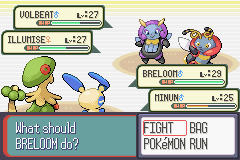 Likewise, technical issues also resulted in the removal of the day/night system. The system’s persistent clock actually rendered the vast majority of copies of at least Gold and Silver unable to save due to being a constant drain on the save battery. As I said in the last part, this resulted in me losing my level 87 Charizard, among other Pokemon.
Likewise, technical issues also resulted in the removal of the day/night system. The system’s persistent clock actually rendered the vast majority of copies of at least Gold and Silver unable to save due to being a constant drain on the save battery. As I said in the last part, this resulted in me losing my level 87 Charizard, among other Pokemon.
On top of that, unlike Gen II before it and Gen IV after, the battle system hasn’t been particularly enhanced. No new types, no changes to how stats work, no changes to type effectiveness. There are some additions, such as Abilities and Double Battles, but there were no fundamental changes to the battle system.
Looking at it 14 years later, the series was in fact better than ever on a technical level, but if we only judged a game’s quality on a technical level, no one would play a Bethesda game. However, the timing, mixed with the above issues left me uninterested in Ruby and Sapphire when they were first released.
And I think I was actually better off for it. When I finally did get around to playing anything in Gen III, it was about three years later when Emerald was released. Emerald is, to this day, the best third version with the most comprehensive overhaul to the content. It not only added a significant amount of new content, it merged Ruby and Sapphire (which are still the two versions with the biggest differences between them) into one game. I argue that, despite the OmegaRuby and AlphaSapphire remakes, Emerald is still the definitive way to play the Hoenn adventure. But I’m getting ahead of myself here.
Like previous entries to the series, the story does follow the formula. This time, your family has just moved to the Hoenn region because your father became the gym leader of Petalburg city. You family also doesn’t seem to love you very much because they make you ride in the back of the moving truck. After setting the clock in your room (which is a real time clock, but its use has been scaled back and it dying doesn’t render the game unsavable), you are left to explore your new home of Little Root Town.
During your exploration, you stumble upon the local scientist, Professor Birch, being attacked by a Pokemon (Poochyena in Ruby and Sapphire, Zigzagoon in Emerald) and he tells you to pick a Pokemon in his bag to fight off his attacker. As thanks, he lets you keep the Pokemon.
After the usual tutorials and early game formalities, the player goes off to Petalburg City and their adventure. Along the way, the player will encounter, not one, but two criminal organizations, Team Magma and Team Aqua, who both have their own goals and ideas.
 In Ruby, the player spends the game fighting Team Magma, with Team Aqua playing a much smaller role, with them only ever seen fighting Team Magma in a couple places. In Sapphire, the two Teams’ roles are reversed, with Aqua being the primary antagonists and Magma having the smaller role.
In Ruby, the player spends the game fighting Team Magma, with Team Aqua playing a much smaller role, with them only ever seen fighting Team Magma in a couple places. In Sapphire, the two Teams’ roles are reversed, with Aqua being the primary antagonists and Magma having the smaller role.
Like with the Gen II games, the story is a blend of the criminal Team, the Legendary Pokemon and the quest for the eight gym badges. This is the new norm for the series. The difference lies in scale and how the different aspects are balanced. In Gen III, the focus is mostly on the criminal Teams. This is because their plans involve summoning the Legendary Pokemon on the covers.
In Ruby and Sapphire, Team Magma and Team Aqua try to summon Groudon and Kyogre, respectively, through the exact same efforts. The differences between Ruby and Sapphire are almost entirely cosmetic. Yeah, the various Magma and Aqua grunts use different Pokemon and some names and sprites are different, but the only difference in the story is which Legendary Pokemon that appears in Sootopolis City near the end of the game, Groudon in Ruby, Kyogre in Sapphire.
Part of the problem here is that some of the plans make no sense for Team Aqua and the Lillycove City base makes no sense for Team Magma. Why would Team Aqua think it’s a good idea to cause a volcanic eruption when their goal is to reduce the world’s landmass? Why would Team Magma have a base in a coast city that can only be accessed by boat or submarine when their goal is to increase the world’s landmass?
Emerald fixed this particular problem by dividing the events between the two. It had Team Magma trying to cause said volcanic eruption, while the Lillycove base belonged to Team Aqua, among several other changes. The game was split pretty much evenly between Team Aqua and Team Magma, which shows the story’s theme of nature versus society far better than Ruby or Sapphire.
Still, the story is at a much larger scale than the previous games. Red, Blue and Yellow’s story had a regional scale, but its events are mostly inconsequential. Gold, Silver and Crystal was also regional, but its events had a grandeur with them, especially when it came to Ho-Oh, Lugia and Suicune. Ruby, Sapphire and Emerald’s story has global implications. The player stops Groudon, Kyogre or both from destroying the world as we know it.
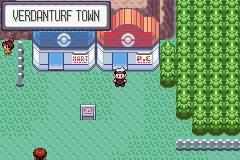
Though I would like to see another entry to the series that scales things back a bit and focuses mostly on the journey to become Champion, I do like the higher stakes. At least in theory. While it works here for the most part, later games will not handle this nearly as well.
On a smaller level, Ruby, Sapphire and Emerald do things differently with the usual rival character. Blue and Silver were antagonistic presences and had a bigger impact to the the story than Team Rocket. This time around, there are two characters that can be called rivals, but neither really play the role fully.
First we have May or Brandon. Which one appears depends on the gender of the player character, as male players will encounter May, while female players will encounter Brandon. Regardless, the two are completely interchangeable as the only differences between them are a few words and sprites.
The reason there are two possible rivals here is because, like Crystal, the player can choose a male or female player character. The opposite of the player’s choice is the one that appears as an NPC in the game.
May/Brandon is presented as Professor Birch’s assistant. They appear several times throughout the game in the usual mechanical purpose of being a level gate, IE, making sure the player’s party is sufficiently strong enough for the next challenge. However, their story purpose is pretty much minimal and completely inconsequential. They’re a friendly face that the player encounters several times throughout the game and that’s about it.
The other character that plays the rival role is Wally. Wally is introduced near the start of the game as a sickly boy who is about to move away from Petalburg and comes to the Petalburg Gym, to seek help catching a Pokemon so he wouldn’t be lonely. The lucky bastard gets the extremely rare Ralts as his first Pokemon.
At first it seems like Wally is little more than the Pokemon catching tutorial. Then he shows up later in the game, telling his uncle that he wants to challenge the Mauville Gym, despite his uncle believing him to not be ready. After the player character thoroughly thrashes the poor Ralts, he gives up. This is the last time he is actually seen until the very end of the story, when he suddenly appears at Victory Road, where he serves as the final battle before the Elite Four and Champion.
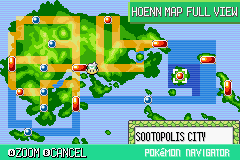 While Wally’s role in the story is pretty disappointing as his growth is barely touched upon, I do like the idea of his arc. It’s supposed to show the influence the player has on the world around them. It ultimately fails because Wally only shows up three times in the course of the story.
While Wally’s role in the story is pretty disappointing as his growth is barely touched upon, I do like the idea of his arc. It’s supposed to show the influence the player has on the world around them. It ultimately fails because Wally only shows up three times in the course of the story.
The reduced focus of the rival character(s) has led to a common complaint about the series because of a perception that the antagonistic rivals were better or more interesting. Blue and Silver were fine antagonists, but Silver didn’t really change anything. His arc was more or less identical to Blue’s.
There’s really not much that Game Freak could do with that particular type of character that isn’t just retreading Blue or Silver. They found ways to integrate the rival characters in new ways later on, so there is a balance to be had that doesn’t retread Blue’s story or leave them as pretty much inconsequential like Wally. If I were to find out that Wally’s inclusion was a late in development after thought, I would not be surprised in the slightest.
Ruby and Sapphire have the weakest story in the series up to this point. The rivals don’t do anything. The villain Teams do things that make no sense for their goals and the journey to the Pokemon League is the same as always. The larger scale helps, as does Emerald’s remixing of the story to have both Teams as antagonists, but not only did Game Freak seem to forget about the series’ legacy, it felt like they were trying too hard to justify having multiple versions. I like the two Team dynamic, but it was completely pointless until Emerald came along. It’s still mostly good, but it was still a step back from what came before.
But this is just the story for one set of games. I’ve barely even touched the gameplay and I’m four pages into this article.
The gameplay is actually mostly improved on a mechanical level. I think the removal of the day/night system was unfortunate, but it doesn’t really effect the game as much as I felt it did when I was young. It’s presence is missed, but only barely in hindsight.
The most noticeable thing about Ruby and Sapphire after the previous games is how big it is. Routes are longer, dungeons are bigger and the map is massive. Hoenn is only a little bit smaller than Kanto and Johto combined. This lets the game show off what it can do on the then-new Game Boy Advance. It brings some new options to the table.
 The day/night system may have been removed, but weather was added to a few parts. The weather mechanics would be expanded later on in the series, but everything has to start somewhere. The weather actually affects battle, too. The rain boosts the power of Water type moves and greatly improves the accuracy of the otherwise inaccurate Thunder. Sandstorms in the desert route hurt deal a small amount of damage to most Pokemon every turn. Bright sunlight boosts Fire type moves and removes the charging turn from Solarbeam. It’s not much, but it is nice to see weather in the overworld reflected in battle.
The day/night system may have been removed, but weather was added to a few parts. The weather mechanics would be expanded later on in the series, but everything has to start somewhere. The weather actually affects battle, too. The rain boosts the power of Water type moves and greatly improves the accuracy of the otherwise inaccurate Thunder. Sandstorms in the desert route hurt deal a small amount of damage to most Pokemon every turn. Bright sunlight boosts Fire type moves and removes the charging turn from Solarbeam. It’s not much, but it is nice to see weather in the overworld reflected in battle.
Visually, this is still one of the best looking games in the series. I actually like the visuals in Gen III more than Gen IV, despite being technically less impressive. It’s very colorful and surprisingly detailed. The Pokemon sprites look fantastic and the variety of battle effects is greatly increased. There are even small details like seeing your reflection in water and leaving footprints in sand. It’s simply a nice looking game.
Other than that, the gameplay follows the same formula as always. You travel the world, using your Pokemon to fight trainers and solve puzzles. I’ll save the details because it is, at the end of the day, the same formula as always.
Where this generation improves upon things is with the Legendary Pokemon. Gen I had only four Legendary Pokemon, plus the Mythical Mew. Gen II had five Legendary Pokemon and the Mythical Celebi. Gen III has eight Legendary Pokemon in three groups and two Mythical Pokemon.
The increased number of Legendary Pokemon is a simple way to add more content to the game. I’ve never understood the belief that more Legendary Pokemon cheapens them somehow. I welcome large numbers of Legendary Pokemon. The more there are, the more incentive I have to explore long, difficult dungeons looking for them.
I’ve already briefly mentioned Groudon and Kyogre. Like with Ho-Oh and Lugia before them, they are encountered in the story. They’re going to be the first Legendary Pokemon the player will catch. Unlike their predecessors, however, they are version exclusive. You cannot encounter Groudon in Sapphire and you cannot encounter Kyogre in Ruby.
They’re not fought after slogging through a dungeon, but that’s OK. They’re fought as climax of the story in Sootopolis City. The grandeur leading up to this fight makes up for the lack of a hunt. The entire story leads up to this moment. And even then, this is something that was changed in Emerald.
 Emerald actually removes the fight from Sootopolis. Instead, the player is sent to the Sky Pillar early (in Ruby and Sapphire, it’s a late game bonus dungeon) to find Rayquaza. And yet Rayquaza is still a post-game bonus boss in the Sky Pillar. This is actually the only way I think Emerald took a step down from Ruby and Sapphire. The Sootopolis fight is an extremely satisfying way to close out the story and removing it reduces the grandeur of it.
Emerald actually removes the fight from Sootopolis. Instead, the player is sent to the Sky Pillar early (in Ruby and Sapphire, it’s a late game bonus dungeon) to find Rayquaza. And yet Rayquaza is still a post-game bonus boss in the Sky Pillar. This is actually the only way I think Emerald took a step down from Ruby and Sapphire. The Sootopolis fight is an extremely satisfying way to close out the story and removing it reduces the grandeur of it.
Still, it is ultimately for the better from a gameplay standpoint because Emerald also allows both Groudon and Kyogre to be caught in new hidden dungeons. I’ve never actually caught Kyogre here because the bastard always uses Take Down at one HP, knocking itself out. In hindsight, I should have simply Master Balled it, but it didn’t occur to me at the time.
The Terra Cave and Marine Cave that are home to Groudon and Kyogre, respectively, in Emerald are still not difficult dungeons, being only two rooms, but seeing as they were added for the sake of giving the opportunity to catch the entire Weather Trio in one game, I can forgive them.
What I can’t forgive is the next set: the Golems. The Golems, Regirock, Registeel and Regice, are as if Game Freak wanted no one to catch them. They are caught through the most obscure, bizarre and outright arbitrary means.
The dungeons they hide in are actually very small. There’s no dungeon slog to get to them, but what they do is far, far harder and more sinister.
Game Freak decided that the way to hide the Golems was to make the player solve puzzles that require specific Pokemon and specific moves. This, by itself isn’t so bad and, in fact, once the puzzles are set up, they’re pretty clever and a very unique way to find Legendary Pokemon.
The problem comes down to where the puzzles are in the world and the fact that the only hints the game will give the player are all written in Braille. Yes. Braille. As in, the alphabet created for the blind to read with their sense of touch. Someone at Game Freak is an insane genius.
On top of that, the caves that house the Golems are scattered throughout the world. They’re pretty obvious when they’re found, but there isn’t anything that I know of that points the player in their direction, let alone the Sealed Chamber, which is found in a random route with strong currents that will quickly wash the player character past the point they need to Dive at to get in.
Then the player has to have the specific Pokemon and moves on hand to solve the puzzles, including a Wailord, which has to either be found on Route 129 with a 1% encounter rate or evolved from a Wailmer at level 40 (though it is relatively easy to get a level 39+ Wailmer through fishing, so it could be worse).
On the one hand, this is a very unique way to find Legendary Pokemon. There’s a lot of fun to be had in solving puzzles instead of fighting through a dungeon. On the other hand, who is playing these games will be able to read Braille? Sure a few of the adults playing might be able to read it, but there is no way that anyone in the target demographic is going to be able solve these puzzles without a guide.
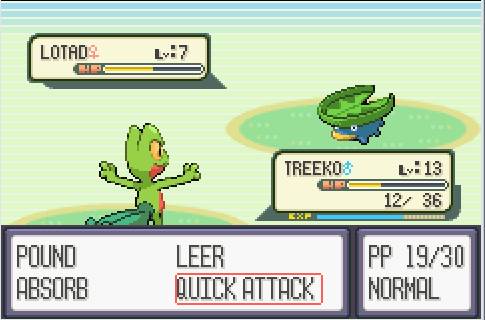 There’s one last set of Legendary Pokemon. The Eon Duo of Latias and Latios show that Game Freak did learn one lesson from having Roaming Legendary Pokemon in Gen II in that only one of them can be caught per game.
There’s one last set of Legendary Pokemon. The Eon Duo of Latias and Latios show that Game Freak did learn one lesson from having Roaming Legendary Pokemon in Gen II in that only one of them can be caught per game.
In Ruby and Sapphire, the pair are version exclusives. Latios roams the region in Ruby after the player becomes Champion, while Latias does this in Sapphire. Emerald elected not to have both of them roaming the world, oddly enough. Instead, Emerald players choose which one will roam the world.
While, mechanically speaking, Ruby and Sapphire were major improvements from previous games in the series, the little things hurt them considerably. Emerald did a lot to fix a number of the small issues and greatly expanded the game’s content, but as I’ll get into next time, it was only a step in the right direction.
Gen III isn’t my least favorite generation as I still like it more than Gen I and Gen VI, but it still feels like a step back. Like with all generations, there are things I like and dislike about this generation, but the small problems I have with it just add up to annoy me as a veteran player. The routes are often too long, the Golems are found in the most arbitrary way, the day/night system was removed and with it the vast majority of the real-time events. It was a new beginning for the series and it being such felt like Game Freak wasn’t too worried about veteran fans. Ruby, Sapphire and Emerald are still great games, but some of the magic of the first two generations was missing.
And I’ve barely even talked about the rest of Gen III. Gen III is huge. I was able to get away without mentioning the Pokemon Stadium games because they didn’t really add anything to the series, but I cannot ignore the GameCube’s continuation of the Stadium-style games. This is because they are more than just side games with the gimmick of 3D battles. They are actually fully featured Pokemon RPGs with their own stories and ideas. However, they, along with the remakes of Red and Green, will be explored next time.

